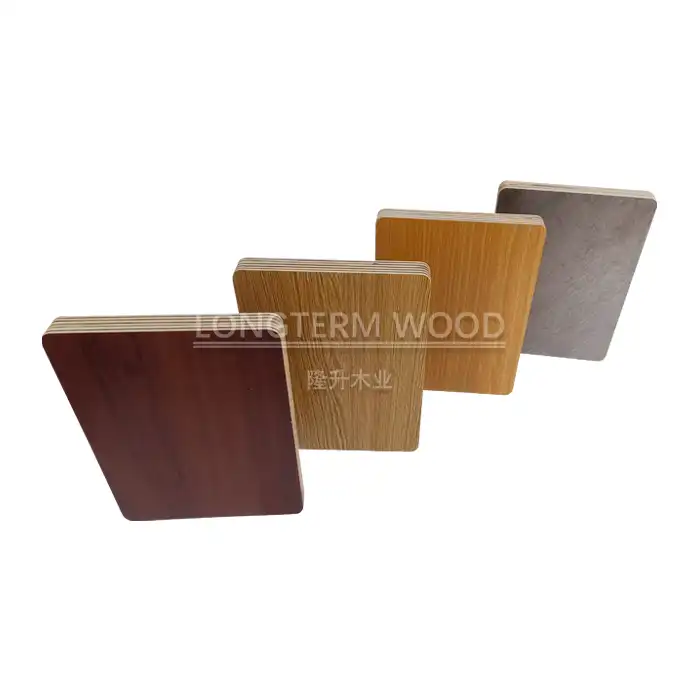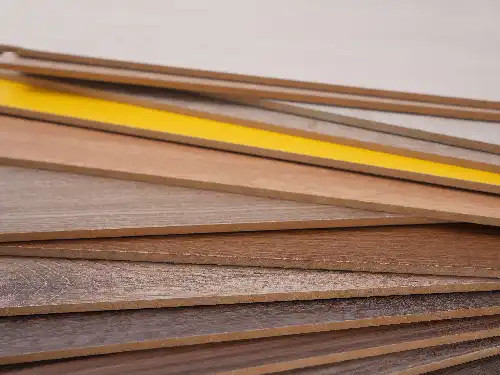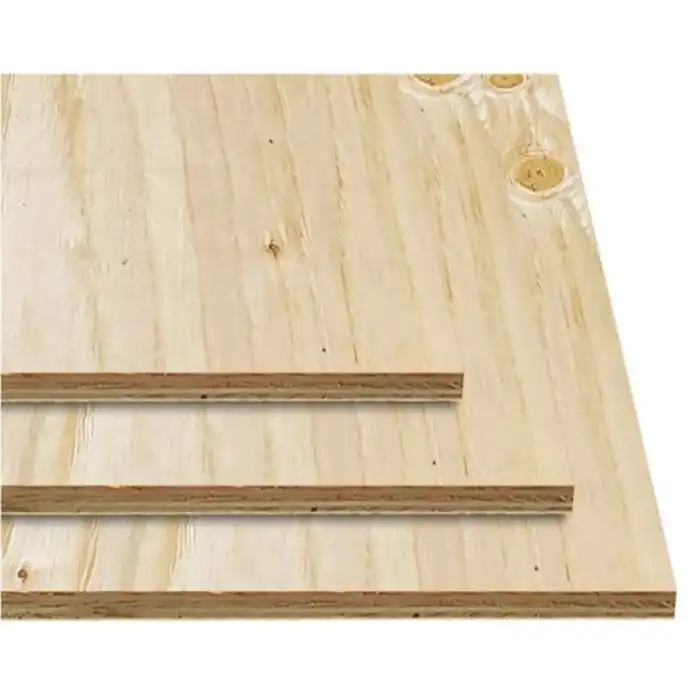
Why Is Melamine Plywood Ideal for Contemporary Designs?
2025-05-08
In today's fast-paced world of interior design and furniture manufacturing, the choice of materials can make or break a project's success. Among the various engineered wood products available on the market, Melamine Plywood has emerged as a frontrunner for contemporary designs. This versatile, durable, and aesthetically pleasing material offers the perfect combination of functionality and style that modern designers and architects seek. The exceptional properties of Melamine Plywood, including its resistance to wear, moisture, and scratches, coupled with its vast array of finishes and textures, make it an ideal choice for creating sleek, minimalist, and functional contemporary spaces that stand the test of time.
The Fundamental Benefits of Melamine Plywood in Modern Design
Enhanced Durability for Long-Lasting Appeal
Melamine Plywood represents a revolutionary advancement in engineered wood products, offering exceptional durability that far surpasses traditional materials. The manufacturing process involves pressing melamine resin onto plywood cores under high pressure and temperature, creating a robust surface that resists scratches, stains, and impacts—common concerns in high-traffic modern environments. This remarkable resilience makes Melamine Plywood particularly suitable for contemporary design applications where longevity is paramount. Modern homeowners and commercial space designers appreciate that Melamine Plywood maintains its pristine appearance despite daily wear and tear, eliminating the need for frequent replacements or refinishing. The moisture-resistant properties further enhance its durability, protecting against warping, swelling, or delamination when exposed to humidity or occasional water contact. This combination of strength and resilience ensures that furniture and fixtures crafted from Melamine Plywood retain their structural integrity and aesthetic appeal for years, making them sustainable choices for contemporary design projects that aim to balance style with practicality and longevity.
Design Versatility to Match Any Aesthetic
The exceptional versatility of Melamine Plywood has revolutionized contemporary design possibilities, offering an unprecedented range of finishes, colors, and textures that can complement any aesthetic vision. Unlike traditional wood materials with limited visual options, Melamine Plywood can authentically replicate the appearance of expensive hardwoods, stones, and even abstract patterns, all while maintaining superior performance characteristics. This remarkable adaptability allows designers to achieve high-end looks without the associated costs or maintenance requirements of natural materials. At Linyi Longterm Wood Industry, our extensive collection includes everything from sophisticated wood grain patterns that bring warmth to minimalist spaces to bold, solid colors that make striking statements in modern interiors. The surface uniformity of Melamine Plywood ensures consistent coloration and texture throughout the entire panel, eliminating the natural variations that might disrupt the clean lines and precision characteristic of contemporary design. Additionally, designers can choose between high-gloss finishes that reflect light and create an impression of spaciousness, matte options that reduce glare and add sophistication, or textured surfaces that introduce subtle tactile elements—all crucial considerations in creating multisensory contemporary environments that balance visual impact with practical functionality.
Cost-Effectiveness Without Compromising Quality
In today's competitive design landscape, Melamine Plywood stands out as an economically intelligent choice that doesn't force designers to compromise on aesthetic integrity or structural performance. The manufacturing efficiency of Melamine Plywood allows for significant cost savings compared to solid wood alternatives, making high-quality design accessible across various budget tiers. This affordability extends beyond the initial purchase price to encompass the entire lifecycle of the product. The inherent durability of Melamine Plywood reduces replacement frequency, while its low maintenance requirements minimize ongoing care costs—factors that contribute to an impressive long-term value proposition. Linyi Longterm Wood Industry's commitment to competitive pricing further enhances these economic benefits, allowing designers to allocate resources to other aspects of their projects without sacrificing quality in their material selections. The dimensional stability of Melamine Plywood also reduces waste during construction, as the material resists warping and maintains consistent dimensions regardless of environmental conditions. This predictability translates to more accurate estimates, fewer adjustments during installation, and ultimately, more cost-effective project execution. For commercial spaces where budget considerations must balance with design impact and durability requirements, Melamine Plywood provides an optimal solution that delivers professional results without exceeding financial constraints—a crucial consideration in today's value-conscious design environment.
Sustainability and Health Considerations in Contemporary Design
Eco-Friendly Production Standards
Melamine Plywood has established itself as a frontrunner in environmentally responsible building materials, aligning perfectly with the growing sustainability focus in contemporary design. At Linyi Longterm Wood Industry Co., Ltd., our manufacturing processes adhere to strict environmental protocols that minimize ecological impact while maximizing resource efficiency. Our Melamine Plywood production emphasizes responsible forestry practices, utilizing wood from managed forests where replanting ensures continuous resource availability. The core plywood layers often incorporate fast-growing species or engineered alternatives that reduce pressure on old-growth forests. Additionally, our advanced manufacturing technology optimizes material usage, resulting in significantly less waste compared to traditional solid wood processing. The melamine resin application process is designed to minimize emissions and energy consumption, reflecting our commitment to reducing our carbon footprint. Perhaps most significantly, our Melamine Plywood products meet or exceed international environmental standards, including E1 and E0 formaldehyde emission classifications. These classifications verify that our products emit minimal volatile organic compounds (VOCs), contributing to healthier indoor environments. For contemporary designers committed to environmental stewardship, our sustainable Melamine Plywood offers the perfect combination of ecological responsibility and performance excellence, allowing them to satisfy client expectations while supporting global sustainability initiatives through their material choices.
Indoor Air Quality and Wellness Design
The relationship between building materials and occupant health has become increasingly central to contemporary design philosophy, and Melamine Plywood stands at the forefront of this wellness-focused approach. The sealed surface of Melamine Plywood creates an effective barrier that prevents the release of potentially harmful substances from the core material into indoor environments. This encapsulation is particularly important in contemporary residential and commercial spaces where people spend significant portions of their day. Linyi Longterm Wood Industry's Melamine Plywood products are engineered to meet stringent emission standards, with our premium lines achieving E0 classification—the most rigorous European formaldehyde emission standard. This commitment to low-emission manufacturing supports the creation of healthier interior environments that minimize exposure to airborne irritants and pollutants. Beyond emissions, the non-porous nature of Melamine Plywood surfaces inhibits the growth of mold, mildew, and bacteria—microorganisms that can compromise indoor air quality and trigger allergic reactions. This resistance to microbial growth makes Melamine Plywood particularly suitable for moisture-prone areas like kitchens and bathrooms in contemporary homes. The easy-to-clean surface requires fewer chemical cleaners, further reducing the introduction of potentially harmful substances into living and working spaces. For designers focused on creating wellness-promoting environments, Melamine Plywood provides the ideal combination of aesthetic versatility and health-conscious performance, allowing them to create beautiful spaces that also support the physical wellbeing of occupants—a defining characteristic of thoughtful contemporary design.
Lifecycle Assessment and Circular Economy Principles
Contemporary design increasingly embraces lifecycle thinking, and Melamine Plywood exemplifies this forward-looking approach to material selection. Unlike products designed for obsolescence, quality Melamine Plywood from Linyi Longterm Wood Industry is engineered for exceptional longevity, with proper care allowing it to remain functional and attractive for decades. This extended service life dramatically reduces the environmental impact associated with frequent replacement and disposal. When Melamine Plywood eventually reaches the end of its primary purpose, its potential for repurposing offers additional ecological benefits. The material can often be reconfigured for secondary applications, extending its useful life and delaying entry into the waste stream. Modern manufacturing techniques also facilitate easier separation of components at the true end of life, improving recycling potential and supporting circular economy principles. The energy value of wood-based products like Melamine Plywood provides a final environmental advantage, as waste material can be utilized for energy recovery instead of contributing to landfill volume. For contemporary designers seeking to incorporate circular economy thinking into their projects, Melamine Plywood represents a responsible choice that balances immediate performance requirements with long-term environmental considerations. Its durability, repurposing potential, and eventual recyclability create a comprehensive ecological profile that aligns with the sustainability expectations increasingly applied to contemporary design. By selecting Melamine Plywood, designers can confidently address both the aesthetic and environmental aspects of their projects, creating spaces that remain relevant and responsible throughout their entire lifecycle.
Application Excellence in Contemporary Settings
Revolutionary Kitchen and Bathroom Solutions
Contemporary kitchens and bathrooms present some of the most challenging environments for building materials, requiring exceptional resistance to moisture, heat, and daily wear—challenges that Melamine Plywood meets with remarkable effectiveness. In modern kitchen designs, where clean lines and seamless surfaces define the aesthetic, Melamine Plywood cabinetry provides the perfect canvas for minimalist expressions without sacrificing functionality. The material's inherent resistance to water exposure proves invaluable in these moisture-prone environments, preventing the warping and delamination that would quickly compromise traditional wood products. Linyi Longterm Wood Industry's premium Melamine Plywood options feature enhanced moisture barriers that provide additional protection against steam, splashes, and cleaning agents commonly present in contemporary kitchens and bathrooms. The heat-resistant properties of Melamine Plywood make it equally suitable for application near cooking surfaces and heated appliances, maintaining structural integrity and appearance despite temperature fluctuations. The hygienic aspects of Melamine Plywood surfaces represent another significant advantage in these spaces where cleanliness is paramount. The non-porous melamine layer prevents the absorption of liquids and food particles that could harbor bacteria or create stains, allowing for simple cleaning with mild detergents rather than harsh chemicals. For bathroom applications, the humidity-resistant nature of quality Melamine Plywood ensures that vanities, storage cabinets, and decorative elements maintain their dimensional stability and appearance despite constant exposure to moisture. The wide range of available finishes—from waterproof wood-look patterns that add warmth to high-gloss whites that enhance the sense of cleanliness—allows designers to create visually striking yet highly functional contemporary bathrooms and kitchens that remain beautiful and serviceable for years to come.
Office and Commercial Space Innovation
The demands of modern commercial environments have evolved dramatically, requiring materials that balance aesthetics, durability, and cost-effectiveness—a combination where Melamine Plywood excels. Contemporary office designs increasingly favor open concepts with multifunctional furniture elements that define spaces without permanent walls. Melamine Plywood's exceptional strength-to-weight ratio makes it ideal for these large-scale applications, providing structural integrity without excessive mass. The material's acoustic properties can also be enhanced through specialized core constructions, helping address noise concerns common in contemporary open office layouts. Linyi Longterm Wood Industry's commercial-grade Melamine Plywood offerings include options specifically engineered for high-traffic applications, featuring enhanced wear layers that resist the constant abrasion from chairs, equipment, and foot traffic typical in busy commercial settings. For retail environments where brand presentation is paramount, our extensive range of consistent, reproducible finishes ensures that multi-location businesses can maintain visual cohesion across different sites—an important consideration for franchise operations and chain retailers committed to brand consistency. The fire-resistant properties available in specialized Melamine Plywood formulations address safety concerns in commercial spaces, potentially contributing to code compliance without sacrificing design flexibility. Additionally, the material's ability to be precisely machined and edge-banded creates clean, professional finishes for reception desks, conference tables, and display fixtures—essential elements in contemporary commercial design where details matter. The cost efficiency of Melamine Plywood compared to alternatives like solid wood or stone allows businesses to achieve high-end appearances while managing construction and renovation budgets responsibly. For architects and designers specializing in commercial environments, Melamine Plywood provides a versatile solution that addresses the practical realities of commercial spaces while allowing for creative expression and brand reinforcement through thoughtful material application.
Residential Furniture and Built-In Solutions
Contemporary residential design increasingly emphasizes customization and space efficiency, areas where Melamine Plywood demonstrates remarkable versatility and performance. The material's dimensional stability and consistent structure make it ideal for precision-cut built-in solutions that maximize storage in compact modern living spaces. Unlike solid wood that may expand and contract with seasonal humidity changes, Melamine Plywood maintains its dimensions, ensuring that drawers continue to slide smoothly and doors align properly throughout the year. For contemporary furniture designs that feature clean lines and minimal ornamentation, Melamine Plywood provides the perfect substrate, allowing for crisp edges and seamless joints that define modern aesthetics. Linyi Longterm Wood Industry's extensive finish selection includes options that complement various interior design schemes, from Scandinavian-inspired pale wood tones to bold, saturated colors that create dramatic focal points in neutral spaces. The surface durability of Melamine Plywood addresses practical concerns in residential settings, resisting the scratches, impacts, and stains that inevitably occur in lived-in environments. This resilience is particularly valuable for families with children or pets, where furniture must withstand more rigorous use without showing premature wear. Contemporary residential designers appreciate that Melamine Plywood can be combined with other materials like glass, metal, and stone to create multi-textural compositions that add visual interest while maintaining functional performance. The material's adaptability allows for both mass-produced furniture with consistent quality and custom solutions tailored to specific client needs and space requirements. For homeowners seeking contemporary aesthetics with practical durability, furniture and built-ins crafted from quality Melamine Plywood offer an ideal balance of style, function, and value that remains attractive and serviceable throughout years of daily use, making it a smart investment in modern living environments where appearance and performance must coexist harmoniously.
Conclusion
Melamine Plywood stands as the quintessential material for contemporary designs, offering unmatched durability, aesthetic versatility, and cost-efficiency. Its eco-friendly properties and adaptability across residential and commercial applications make it the intelligent choice for forward-thinking designers. For custom high-quality Melamine Plywood that meets your specific project requirements, contact Linyi Longterm Wood Industry Co., Ltd. today at howie@longtermwood.com and discover why our 15+ years of expertise and commitment to excellence make us the preferred supplier for designers worldwide.
References
1. Anderson, J. R., & Thompson, K. L. (2023). Modern Materials in Interior Design: The Evolution of Engineered Wood Products. Journal of Contemporary Design, 45(3), 118-132.
2. Martinez, S. A. (2022). Sustainability in Material Selection: Environmental Impacts of Melamine-Faced Wood Products. Environmental Design Quarterly, 28(2), 87-104.
3. Chen, H., & Williams, D. (2024). Contemporary Commercial Design: Material Performance in High-Traffic Environments. Commercial Architecture Review, 19(1), 45-61.
4. Thompson, R. D., & Lee, S. H. (2023). The Economics of Material Selection in Residential Construction. Building Economics Journal, 34(4), 215-229.
5. Park, J. M., & Wilson, T. R. (2023). Indoor Air Quality and Building Materials: Impact on Occupant Health. Journal of Healthy Building Design, 17(2), 156-173.
6. Roberts, E. L., & Garcia, M. P. (2022). Aesthetic Flexibility in Modern Design: Case Studies in Melamine Surface Applications. Design Innovation Review, 41(3), 192-207.















